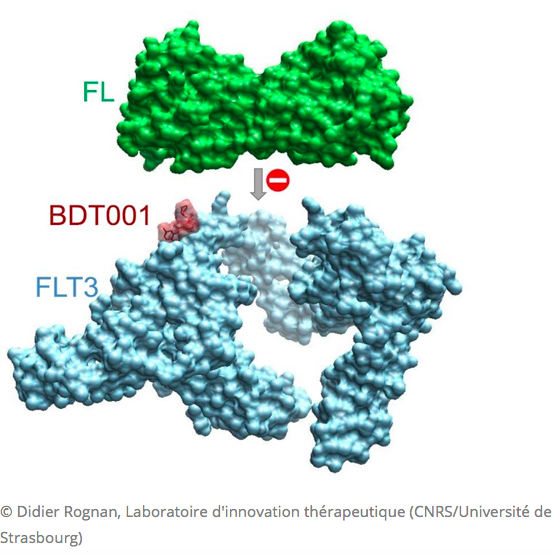Neuropathic pain, also called chronic pain, is rather resistant to current treatments. A new target, discovered by the universities of Montpellier and Strasbourg, seems to represent a breakthrough to avoid the “chronicization” of these pains.

The neuropathic pain, or neurogenic pain, is a particular form of chronic pain, where hypersensitivity to pain (hyperpathy, allodynia) and abnormal sensations (burns, tingling, etc.) predominate. It is linked to a nervous system dysfunction which can intervene at different levels (peripheral nerve, spinal cord or brain).
The problem is that conventional pain medication does not work for pain that almost affects 10% of the population (diabetes, shingles, MS, traumatic injuries, etc.). We are forced to resort to medication psychotropic drugs (antidepressants, anti-epileptics, etc.), but less than 50% of patients consider themselves to be genuinely improved and the effect takes a long time to obtain (at least one month of treatment).
FLT3 and its key role in pain
A team of researchers from the universities of Montpellier and Strasbourg have launched a research program on neuropathic pain which has resulted in the discovery of a receptor, FLT3, which appears to play a key role.
FLT3 is a tyrosine kinase and its receptor is expressed on the surface of blood stem cells and immune cells. In the event of a nerve injury, an influx of immune cells occurs at the injury site and these cells secrete an inflammatory protein which, due to the injury, can reach the FLT3 receptor on the nerve and bind with it to activate it.
It is this protein-FLT3 receptor binding that activates a chemical cascade in the nervous system and leads to pain and its persistence: FLT3 is therefore in the foreground in the phenomenon of the “chronicization” of pain.
BDT001, a promising molecule
The research team therefore sought an inhibitor of FLT3 using an original approach. They perfectly defined the 3-dimensional structure of the FLT3 receptor and searched in a database of 3 million molecules, the one that could best suit in terms of complementary structure, like a key in a lock. With this approach, they discovered a molecule that seems very promising (BDT001) since it seems to perfectly block FLT3 and therefore the cascade that leads to neuropathic pain.
Tested in an experimental model in mice, the new BDT001 molecule allows in less than 3 hours to obtain a significant reduction in hyperalgesia and allodynia. This effect lasted 48 hours with a single dose. These results are published in the journal Nature Communications.

An ongoing development
Other FLT3 inhibitors have been tried in the treatment of certain types of leukemia, but their development was stopped due to the numerous Side effects. BDT001 seems more promising from this point of view and has much less interaction with other drugs.
The researchers created a start-up to ensure the early stages of clinical development and to have an injectable form for the first studies in humans in 2010.

.














